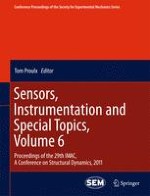2011 | OriginalPaper | Chapter
Development of Polymer ‘Chips’ used in Medical Diagnostics
Authors : Zachary G. Brush, Laura M. Schultz, Justin W. Vanness, Kevin M. Farinholt, Stephen A. Sarles, Donald J. Leo
Published in: Sensors, Instrumentation and Special Topics, Volume 6
Publisher: Springer New York
Activate our intelligent search to find suitable subject content or patents.
Select sections of text to find matching patents with Artificial Intelligence. powered by
Select sections of text to find additional relevant content using AI-assisted search. powered by
In recent years, there has been growing interest in creating bio-inspired devices that feature artificial bilayer lipid membranes (BLM), or lipid bilayers. These membranes can be tailored to mimic the structure and transport properties of cellular walls and can be used to selectively transport ions and other species between aqueous volumes. One application of this research is the formation of a standardized BLM contained within a portable and disposable housing for use in medical diagnostics. This concept utilizes a flexible polymer ‘chip’ that has internal compartments for housing both an organic solvent and an aqueous solution, which contains phospholipid molecules, proteins, and specific analyte molecules. The formation of a BLM within the chip enables integration of the chip into an electronic reader to perform diagnostic measurements of the sample. A key element of the bilayer formation process requires a single aqueous volume to first be separated into multiple volumes such that it can then be reattached to form a bilayer at the interface. This process, called the regulated attachment method, relies on the geometry of the deformable ‘chip’ to separate and reattach the aqueous contents held inside by opening and closing an aperture that divides adjacent compartments through the application of mechanical force. The purpose of this research is to develop an optimized chip that provides a controllable method for initially separating the aqueous phase via dynamic excitation. This study focuses on two specific aspects: designing an efficient excitation method for separating the aqueous volume, and optimizing the geometry of the chip to decrease the required input energy and better target the location and duration of the separation. Finite Element (FE) models are used to optimize the chip geometry and to identify suitable excitation signals. A series of experimental studies are also presented to validate the FE models.
